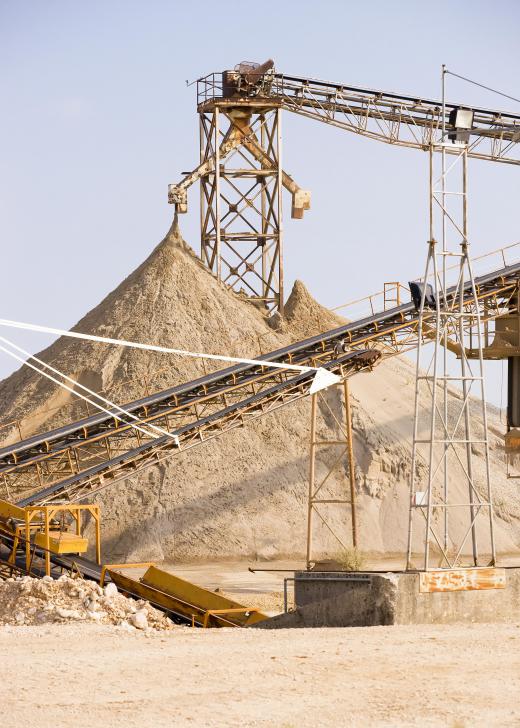The two most common forms of recycled aggregate used in concrete are glass and crushed concrete from previous applications. While other materials such as fiberglass and granulated coal ash have been experimented with, these two products seem to be the most effective recycled material for use in concrete. Some of the criteria that must be met are the recycled aggregate's ability to provide strength and durability to the finished concrete product as well as offer comparative workability to those mixtures that do not contain any recycled materials. Crushed glass and previously used concrete are also used for their superior hardness properties, in addition to their resistance to absorbing chemicals and compounds commonly found in other materials such as clay and limestone.
Recycled aggregate of glass and concrete must first be prepared for use in new concrete applications. The materials are usually placed in a rock crusher device set to a specific crush size to produce the correct sized filler for the concrete. It is then run through an aggregate washer to remove any debris, dirt, or impurities that may hamper the material's ability to adhere to the other concrete components. After careful screening, the recycled concrete materials are ready to be added to the concrete mixture for use.

Many of the other materials that have been experimented with for use in concrete products have proven to be unstable for this application. A proper recycled aggregate material must be well suited for the concrete's intended purpose. In most building and weight bearing applications, it is common to find concrete containing recycled cement particles, as opposed to crushed glass. The recycled concrete aggregate offers the same level of strength and durability as products create from all new materials. It is also resistant to contamination from other common chemicals and substances found in and near construction work sites.

The use of crushed glass is often used in concrete applications in which the finished product will not be required to withstand large amounts of weight and pressure. Glass materials most frequently used for concrete are those that are unable to be recycled in more traditional ways, including light bulbs and glass bottles marked as non recyclable. In order to be prepared for use in concrete, the glass is finely ground and added to the concrete mixture in place of sand. This concrete is then suited for applications like walkways and biking paths, in addition to any non-structural project needs.
